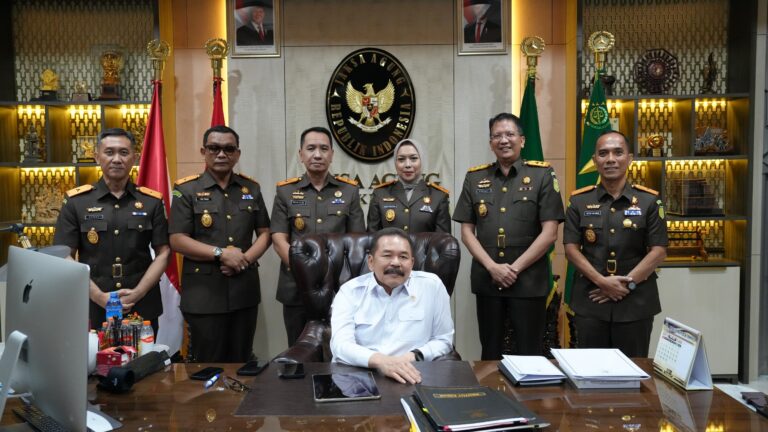I. Introduction
A. Explanation of ISO 9001 Certification
Definition of ISO 9001 ISO 9001 is an internationally recognized standard for quality management systems (QMS). Developed by the International Organization for Standardization (ISO), it provides a framework for organizations to ensure their products and services consistently meet customer expectations and regulatory requirements. The standard outlines a set of criteria for establishing, implementing, maintaining, and continuously improving a QMS. ISO 9001 is part of the ISO 9000 family of standards, which focuses on various aspects of quality management and quality assurance.
B. Importance of ISO 9001 for Organizations
- Improved Quality: By adhering to the principles of ISO 9001, organizations can enhance the quality of their products and services, leading to increased customer satisfaction and loyalty.
- Operational Efficiency: The standard promotes the adoption of streamlined processes and effective resource management, resulting in reduced waste, lower costs, and improved overall efficiency.
- Enhanced Customer Satisfaction: A focus on meeting customer requirements and addressing feedback helps organizations better understand and fulfill customer needs, leading to higher satisfaction levels.
- Competitive Advantage: ISO 9001 certification differentiates organizations from competitors by showcasing their commitment to quality, which can attract new customers and open up new business opportunities.
- Regulatory Compliance: The standard helps organizations ensure they meet appsslicable regulatory and legal requirements, reducing the risk of non-compliance and associated penalties.
II. Understanding ISO 9001
A. Key Principles of ISO 9001
- Customer Focus The primary focus of ISO 9001 is to meet and exceed customer expectations. Organizations are encouraged to understand their customers’ current and future needs, align their objectives to satisfy these needs, and strive to enhance customer satisfaction continually.
- Leadership Effective leadership is crucial for the success of any quality management system. ISO 9001 emphasizes the importance of strong leadership to establish unity of purpose and direction within the organization. Leaders are responsible for creating an environment that encourages employee involvement, clear communication of the organization’s vision, and setting strategic objectives aligned with quality goals.
- Engagement of People Engaging employees at all levels is vital for the success of an ISO 9001 implementation. The standard advocates for involving people in the quality management processes, recognizing their contributions, and fostering a culture where employees are motivated to achieve the organization’s quality objectives.
- Process Approach ISO 9001 promotes a process-oriented approach to managing activities and resources. By understanding and managing interrelated processes as a system, organizations can improve efficiency and effectiveness. This approach helps in identifying opportunities for improvement, reducing redundancy, and optimizing resource utilization.
- Evidence-Based Decision Making Making decisions based on data and evidence is essential for effective quality management. ISO 9001 emphasizes the use of accurate and reliable data to inform decision-making processes. Organizations are encouraged to collect and analyze data on performance metrics, customer feedback, and process outcomes to make informed decisions that drive improvements and achieve desired results.
B. Structure of ISO 9001
Core Components and Clauses ISO 9001 is structured into ten clauses, each addressing different aspects of a quality management system. The core components and clauses include:
- Scope – Defines the scope of the standard and its applicability.
- Normative References – Lists reference standards essential for the application of ISO 9001.
- Terms and Definitions – Provides definitions of key terms used in the standard.
- Context of the Organization – Requires organizations to understand their context and determine external and internal factors that can impact their QMS.
- Leadership – Outlines the responsibilities of top management in leading and supporting the QMS.
- Planning – Focuses on setting quality objectives and planning for risk and opportunities.
- Support – Covers resources, competence, awareness, communication, and documented information.
- Operation – Details the operational processes required to deliver products and services.
- Performance Evaluation – Involves monitoring, measurement, analysis, and evaluation of QMS performance.
- Improvement – Emphasizes the need for continuous improvement of the QMS.
III. The ISO 9001 Certification Process
A. Steps to Achieve ISO 9001 Certification
- Initial Assessment and Gap Analysis The first step in achieving ISO 9001 certification involves conducting an initial assessment and gap analysis. This process involves reviewing the current quality management practices within the organization and comparing them against the ISO 9001 requirements. The goal is to identify areas of non-compliance and opportunities for improvement.
- Developing and Implementing a Quality Management System (QMS) Based on the findings from the gap analysis, the next step is to develop and implement a Quality Management System (QMS) that aligns with ISO 9001 standards. This involves defining and documenting processes, procedures, and policies that ensure consistent quality in products and services. Key elements of a QMS include quality objectives, roles and responsibilities, resource management, and process control.
- Internal Auditing and Management Review Once the QMS is implemented, the organization must conduct internal audits to evaluate the effectiveness of the system and ensure compliance with ISO 9001 requirements. Internal audits help identify any non-conformities or areas for improvement. In addition to internal audits, review audit findings, and make decisions on necessary corrective actions and improvements.
- Selecting a Certification Body After the internal audits and management reviews confirm that the QMS is effective and compliant, the organization must select a certification body to conduct the external certification audit. It is important to choose an accredited and reputable certification body with experience in the relevant industry.
- Certification Audit The certification audit is conducted in two stages. Stage 1 is a preliminary audit where the certification body reviews the organization’s documentation and readiness for the certification audit. Stage 2 is the main audit, where the auditors assess the implementation and effectiveness of the QMS on-site. Any non-conformities identified during the audit must be addressed by the organization.
B. Maintaining ISO 9001 Certification
- Ongoing Compliance and Continuous Improvement Achieving ISO 9001 certification is not a one-time effort but requires ongoing commitment to maintaining compliance and continuous improvement. Organizations must continually monitor their QMS, conduct regular internal audits, and review processes to ensure they remain effective and aligned with ISO 9001 requirements.
- Surveillance Audits and Re-Certification To maintain ISO 9001 certification, organizations must undergo regular surveillance audits conducted by the certification body. These audits typically occur annually and ensure that the organization continues to comply with the standard. Surveillance audits focus on key areas of the QMS and assess the effectiveness of the implemented processes.
IV. Benefits of ISO 9001 Certification
A. Enhanced Quality Management
- Improved Product and Service Quality ISO 9001 certification directly impacts the quality of products and services offered by an organization. The standard requires the establishment of a robust Quality Management System (QMS) that encompasses all processes, from design and development to production and delivery.
- Increased Customer Satisfaction One of the primary goals of ISO 9001 is to enhance customer satisfaction by focusing on meeting customer requirements and continually improving processes. By implementing a QMS that prioritizes customer needs, organizations can provide products and services that align with customer expectations. Satisfied customers are more likely to become repeat buyers and advocates for the organization, driving long-term business success.
B. Operational Efficiency
- Streamlined Processes and Reduced Waste ISO 9001 promotes a process-oriented approach to quality management, encouraging organizations to map out and optimize their processes. This leads to streamlined operations, where each process is well-defined, monitored, and continuously improved. Streamlined processes result in cost savings, faster turnaround times, and more efficient use of resources.
- Better Resource Management Effective resource management is a key component of iso 9001 sertifika eğitimi. The standard requires organizations to ensure that adequate resources, including personnel, equipment, and materials, are available to support quality objectives. Better resource management leads to more efficient operations, lower costs, and improved overall performance.
V. Common Challenges and Solutions
A. Typical Obstacles in the Certification Process
- Resistance to Change
- Challenge: One of the most common hurdles in the certification process is resistance to change. Employees and even management may be hesitant to adopt new processes and systems, especially if they perceive them as cumbersome or unnecessary. This resistance can slow down the implementation of ISO 27001 and undermine the effectiveness of the ISMS.
- Impact: Resistance can lead to delays in the certification process, incomplete implementation of security measures, and a lack of engagement with the ISMS.
- Resource Allocation
- Challenge: Allocating sufficient resources—whether financial, human, or technological—can be a significant challenge for organizations, particularly small and medium-sized enterprises (SMEs). The cost of certification, along with the time and effort required, can strain an organization’s resources.
- Impact: Insufficient resource allocation can result in a poorly implemented ISMS, gaps in security controls, and ultimately, failure to achieve certification.
B. Strategies for Overcoming Challenges
- Effective Change Management
- Solution: Implementing a structured change management approach can help address resistance to change. This involves:
- Communication: Clearly communicating the benefits of ISO 27001 certification to all employees, emphasizing how it will protect the organization and their roles within it.
- Involvement: Involving employees in the process by seeking their input and feedback, which can increase their sense of ownership and reduce resistance.
- Support: Providing ongoing support and resources to help employees adapt to new systems and processes.
- Solution: Implementing a structured change management approach can help address resistance to change. This involves:
- Training and Development
- Solution: Providing targeted training and development opportunities is essential to ensure that everyone involved understands the standard’s requirements and how to implement them. Strategies include:
- Tailored Training Programs: Develop training sessions that are specific to different roles within the organization, ensuring that each team understands their responsibilities within the ISMS.
- Continuous Learning: Promote a culture of continuous learning by offering regular updates, workshops, and refresher courses on ISO 27001 practices.
- Access to Resources: Provide easy access to resources, such as documentation, templates, and expert guidance, to assist with the implementation process.
- Solution: Providing targeted training and development opportunities is essential to ensure that everyone involved understands the standard’s requirements and how to implement them. Strategies include:
VI. Resources and Support
A. Available Tools and Resources
- ISO 27001 Guidelines and Templates
- Resource Overview: Comprehensive guidelines and templates are available to assist organizations in understanding and implementing ISO 27001 requirements. These resources include policy templates, risk assessment tools, and documentation checklists, all designed to simplify the certification process.
- Benefits: Utilizing these templates can save time and ensure consistency across the organization’s ISMS documentation. They provide a clear framework to follow, reducing the likelihood of overlooking critical elements of the standard.
- Training Programs and Workshops
- Resource Overview: Numerous training programs and workshops are designed to educate employees and management on ISO 27001 requirements and best practices. These programs range from introductory courses to advanced, role-specific training sessions.
- Benefits: Training programs help build the necessary skills and knowledge to implement and maintain an effective ISMS. Workshops, in particular, offer hands-on experience and the opportunity to interact with experts, providing valuable insights into the practical aspects of ISO 27001.
B. Professional Support and Consultancy
- Benefits of Engaging ISO Consultants
- Support Overview: ISO consultants are experts in the certification process and can provide tailored advice and support to help organizations achieve ISO 27001 certification. They assist with everything from initial planning and gap analysis to implementation and audit preparation.
- Benefits: Engaging a consultant can significantly reduce the time and effort required to achieve certification. Consultants bring specialized knowledge and experience, helping to avoid common pitfalls and ensuring that the ISMS is fully compliant with ISO 27001 requirements. Their expertise can also be invaluable in addressing complex or unique challenges that may arise during the certification process.
- Finding a Reputable Certification Body
- Support Overview: Choosing the right certification body is a critical step in the ISO 27001 process. A reputable certification body will conduct a thorough and fair assessment of your ISMS, ensuring that it meets all the necessary standards.
- Benefits: Working with a well-regarded certification body adds credibility to your certification, which can be particularly important when demonstrating compliance to clients, partners, and regulators. When selecting a certification body, consider factors such as accreditation, industry experience, and customer feedback to ensure you choose a partner that meets your needs.
VII. Conclusion
A. Encouragement for Organizations to Pursue Certification
- The Long-Term Value of ISO 9001: ISO 9001 certification is not just a short-term goal but a long-term investment in the future of your organization. The certification lays the foundation for ongoing quality management and operational excellence. By adopting ISO 9001, organizations position themselves for sustainable growth, enhanced customer trust, and the ability to adapt to changing market demands. The certification also provides a framework for maintaining and improving quality, which is essential for staying competitive in today’s global economy.
- The Role of Certification in Achieving Quality Excellence: Achieving ISO 9001 certification is a key step in an organization’s journey toward quality excellence. The certification process encourages a proactive approach to identifying and addressing inefficiencies, reducing errors, and enhancing product or service quality. Organizations that pursue ISO 9001 demonstrate their commitment to excellence, which can lead to increased customer loyalty, better stakeholder relationships, and a stronger reputation in the industry.
B. Final Thoughts on the Impact of ISO 9001 Certification on Organizational Success
ISO 9001 certification is more than a regulatory requirement—it’s a strategic tool that can drive organizational success. By embedding quality management into the core of your operations, you not only improve processes but also create a culture of excellence that resonates throughout the organization. The positive impact of ISO 9001 extends beyond internal operations, influencing customer satisfaction, market perception, and business resilience.













